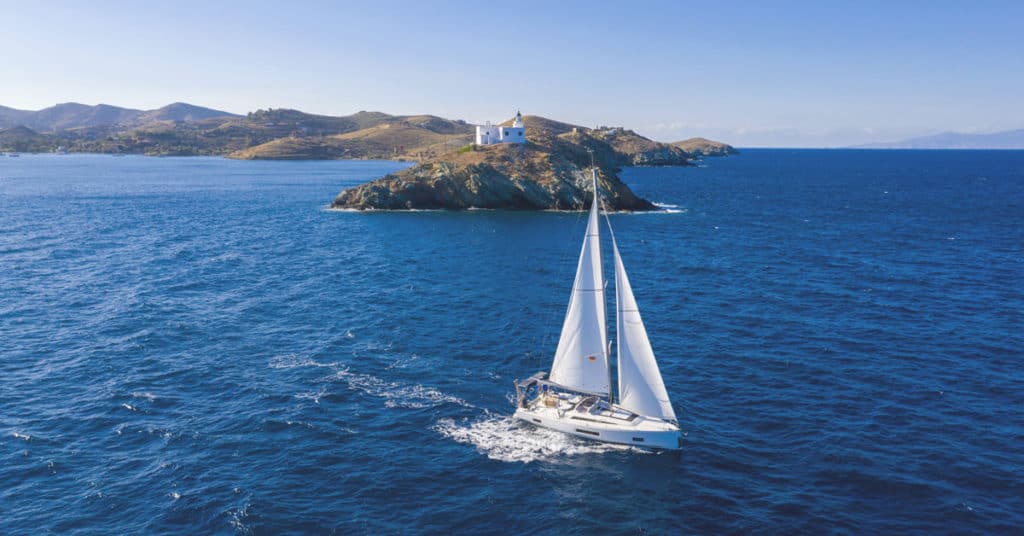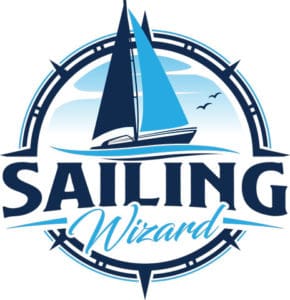Most people think of sailing as a passive, leisurely activity, which it often is. However, statistics show that sailing does have dangers, and the better educated you are about how to operate your boat, the safer you will be.
Sailing is more dangerous than skiing, snowboarding, and NFL football combined. However, to put this in perspective, sailing is twice as safe as driving your car. It is essential to properly educate yourself about boating safety, stay alert, always wear a life jacket, and never drink while sailing.
In this article, we will give you a clear picture of some of the dangers of sailing and the important steps you can take to mitigate those dangers. We will also look at the various aspects of boating safety and how to avoid injuries while on the water.

What Are the Injury and Fatality Statistics?
According to the U.S. Coast Guard Boating Statistics Report, in 2019, there were 613 boating fatalities in America, which represents a 3.2% decrease from the year before. It is also relevant to note that this is for all forms of boating, not just sailing. While the number of fatalities went down, the number of reported accidents actually went up 0.6%, from 4,145 to 4,168. For the years 2000-2011, the fatality rate was 1.19 sailing deaths per million sailing-person days.
Alcohol has always been and continues to be the number one contributing factor for all boating fatalities, leading to over 100 deaths, which is 23% of total fatalities. Just like it does when you are driving a car, alcohol greatly impairs your functioning and reasoning abilities and should be avoided when operating any form of watercraft.
Any recreational activity around water has the potential for a drowning accident, and when the cause of death was known, 79% of boating fatalities were the result of drowning.
Bad weather and rough seas should always be avoided.
What Are Some of the Dangers of Sailing?
Let’s take a look at some of the common risks faced by sailors, and how you can reduce these different sources of danger.
Capsizing
For most recreational sailboats, the chances of the boat tipping over and/or going upside down are extremely rare. Monohull boats have weighted keels that prevent them from turning over in all but the most extreme conditions.
If you are intrepid enough to go ocean sailing on high seas, you can succumb to broaching, which is what happens when your boat is turned into the wind on high seas, rendering your rudder ineffective. This puts you in a position to be hit broadside by a large wave, potentially causing you to capsize. Falling overboard or capsizing account for 70.1% of boating fatalities.
How to Prevent Capsizing
- Do not overload your boat.
- Make sure both passengers and gear are spread evenly (not all on one side).
- Only come about at safe speeds.
- Always anchor your boat from the bow, never the stern.
- Avoid sailing in rough waters and/or bad weather.
Pitchpoling
This is even rarer than capsizing and occurs when your boat turns end-over-end. Although rare for all types of sailboats, it might be slightly more likely to happen in a catamaran due to their higher speeds and the fact that if the nose goes into a large wave, the back end can be pushed up by high winds.
How to Prevent Pitchpoling
- Shift as much weight (i.e., people) to the back of the boat as possible.
- If you feel the boat heading for a pitchpole, slacken the sails to reduce speed.
- Turn slightly into the wind, if possible.
Running Aground
Most daysailers will not have to worry too much about this, so long as they stay attentive and follow the old seafaring adage, “When at sea, it is best to stay far from the shore.”
If you plan on an ocean-going cruise of a long duration, you will want to make use of a good windvane, which is a self-steering mechanism that allows you to sleep while the boat stays properly angled toward the wind. This will put you at risk of running aground if you are anywhere near a reef or shoreline.
How to Avoid Running Aground
- Study the nautical charts of the area you will be sailing to avoid boating hazards.
- Keep a lookout for buoys, markers, shoals, and sandbars.
- Always maintain a safe speed, especially in shallow waters.
- A good depth finder will have a shallow alarm to warn of dangers.
Falling Overboard
The number one cause of fatalities in boating accidents is drowning, so falling overboard is an ever-present danger on any boat. Always wear a life jacket, no matter what the conditions or where you are sailing. When you are on the high seas, it is a good idea to clip your life vest to a lifeline. That way, if you do fall overboard, you will still be attached to the boat.
How to Avoid Falling Overboard
- Keep your center of gravity low by not standing up all the way.
- Make turns slowly.
- Always maintain three points of contact with your hands and feet.
Boom Injuries
The boom is a spar that holds the bottom part of the sail. When a sailboat has to “come about” so that the wind changes from one side of the boat to the other, the boom swings across the aft portion of the sailboat at about shoulder height of anyone standing. In other words, the skipper must always call out “coming about” just before executing the maneuver, and all passengers must duck.
The boom sometimes swings very violently, as winds are unpredictable, and the boom will strike anyone who fails to duck while the boat is coming about.
How to Avoid (or Mitigate) Boom Injuries
- Wear protective headgear.
- Pad the boom.
- A higher boom clearance.
Collisions With Freighters and Boats
Just as you follow the rules of the road while driving, you must follow the rules of the sea to avoid collisions with other vessels. Who has the “right of way” on the water is different than it is on land. Ocean-going freighters on the high seas weigh many thousands of tons and are simply not capable of turning quickly, so you must steer your sailboat clear of them.
How to Avoid Collisions at Sea
- Cross ship channels quickly, or avoid them altogether.
- Be alert to other ship traffic.
- Do not drink and sail.
- Be seen, especially at night (this means proper lighting).
- Learn your whistle signals: 5 or more mean danger!
- Use radio channel 13 for ship-to-ship communication.
Floating Containers
It is common that large container ships encounter heavy weather and large waves as they crisscross the oceans. Each year, between 2,000 and 10,000 of those large containers break loose and are washed overboard. Sometimes they sink. Sometimes they float on or just under the surface.
Lightning
There are several types of lightning, and ground flashes are what effect sailboats the most. Ground flashes strike from 4% to 20% of moored sailboats in Florida each year. There are three main concerns to protect your boat and crew.
To protect your boat and crew from lightning, you need to be mindful of:
- Grounding
- Bonding
- Electronics protection
A lightning strike can short out all your electronics.
More Dangers of Sailing
This video shows some of the other things you should consider to make your sailing adventures safer, easier and more enjoyable:
Conclusion
Whether you have a small sailboat on the lake or a large yacht on the ocean, sailing can be a thrilling adventure and a great way to enjoy the water. Risk is a part of that adventure, but with proper boating education, life vests, lifelines, and good common sense, sailing can be enjoyed safely.
